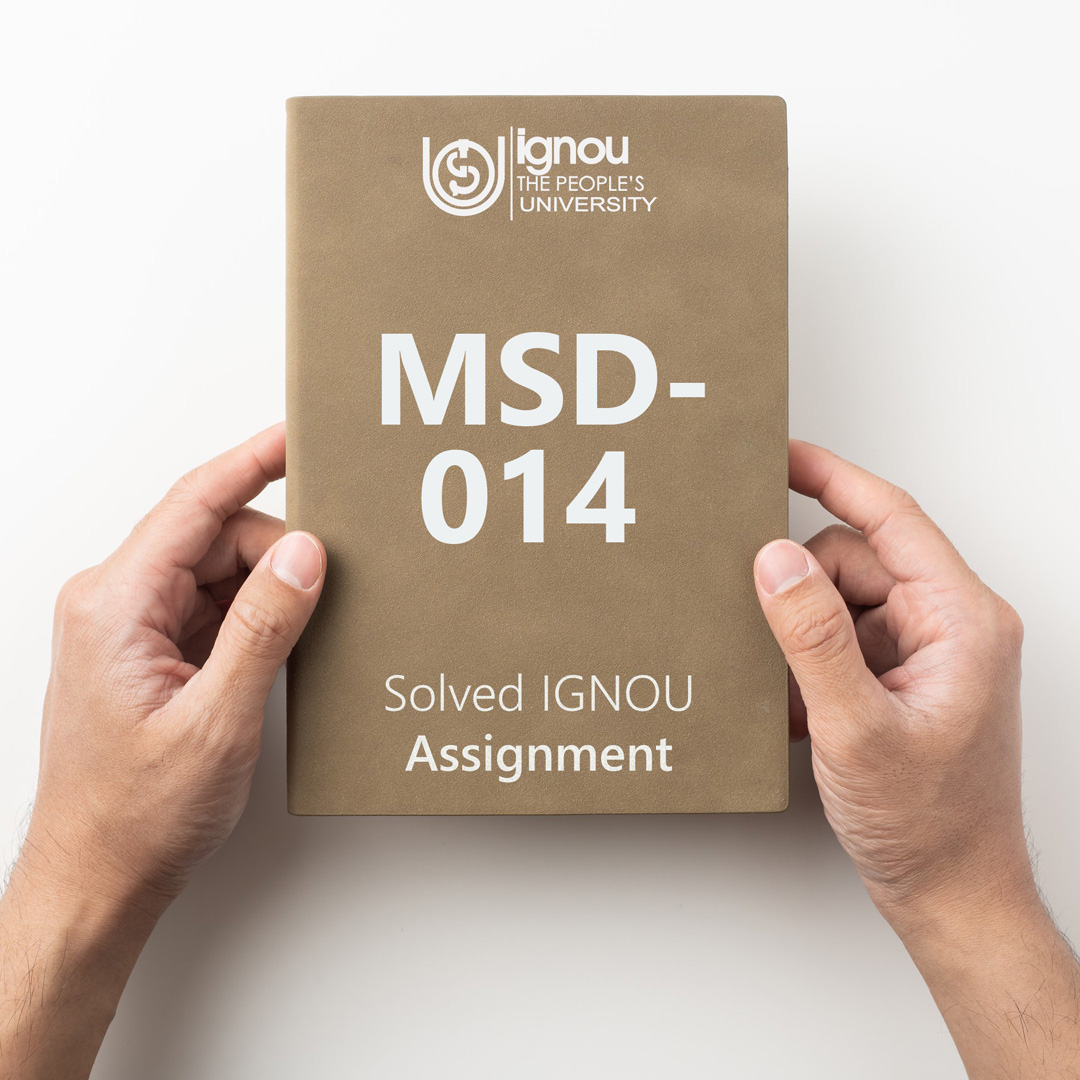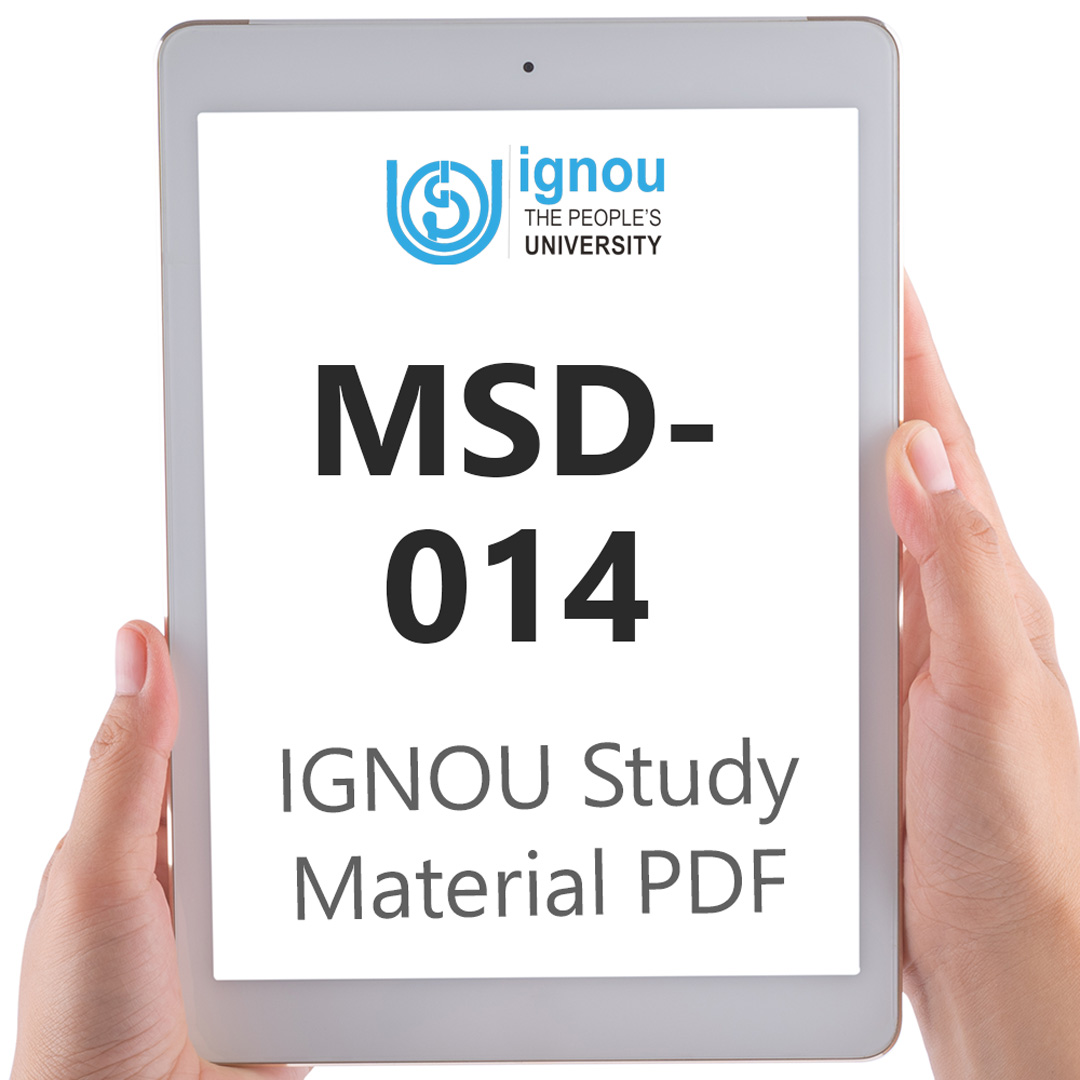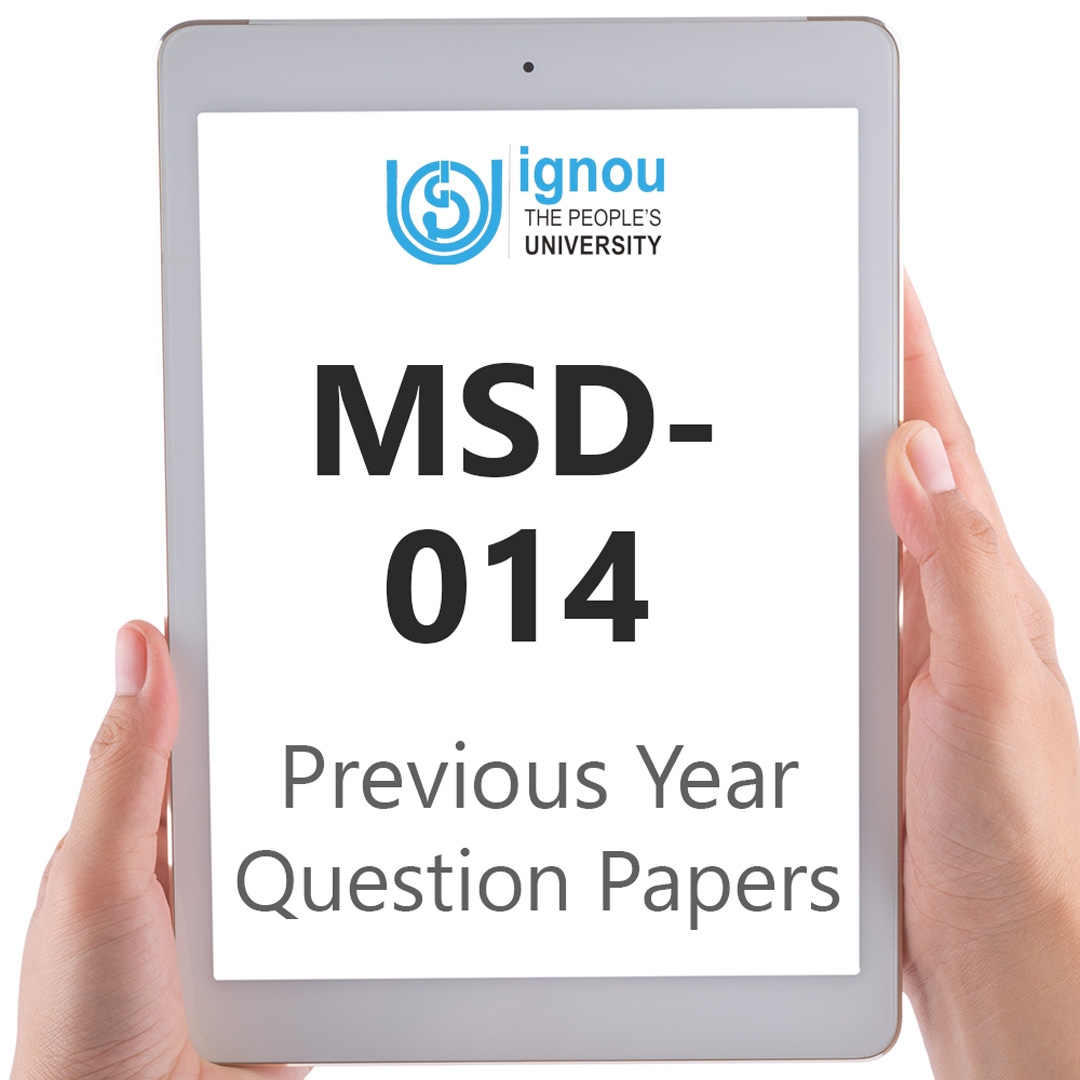If you are looking for MSD-014 IGNOU Solved Assignment solution for the subject Ecological Economics, you have come to the right place. MSD-014 solution on this page applies to 2023 session students studying in PGDSS, MASS courses of IGNOU.
MSD-014 Solved Assignment Solution by Gyaniversity
Assignment Code: MSD-014/TMA/2023
Course Code: MSD-014
Assignment Name: Ecological Economics
Year: 2023
Verification Status: Verified by Professor
Answer all the questions. All questions carry 25 marks each.
Q1) Explain the economy-environment linkages with suitable examples.
Ans) An environment-economy model is based on the idea that all economic activity uses materials and energy from the environment, either directly or indirectly, and that these materials and energy are eventually returned to the environment as waste. The economy is made up of the things people do that are usually called production, distribution, and consumption. The economy is not only a part of the ecosphere, but it is also a part of the activities that make up social life.
Sustainable development is the idea that current practises shouldn't make it harder to keep or improve living standards in the future. This is looked at in the context of how the economy works in the environment, which is a dependent relationship. A materials/energy balance view of the economy is very different from the more common view of the economy, which focuses on the circular flow of income and the exchange of goods in markets and ignores connections to the environment. In this model, households provide the factors of production (land, labour, capital, and entrepreneurship) to firms, which make the output and give the money back to households. This method has been used in several different countries and regions. In this situation, sustainable development means that economies must work within the limits set by nature. The market system still works, but it must do so within the limits set by the government to avoid the uncertain results that nature will eventually bring.
The economy and the environment are interdependent, meaning that changes in one will affect the other. An example of economy-environment linkages is the impact of economic activities on the environment. For example, the production and consumption of goods and services can result in air and water pollution, deforestation, and other environmental degradation. In turn, environmental degradation can harm human health and reduce the quality of life, as well as affect economic growth and development.
Another example of economy-environment linkages is the role of natural resources in the economy. Natural resources, such as forests, minerals, and water, are important inputs in many economic activities. However, the over-exploitation of these resources can lead to their depletion, which can reduce the supply of goods and services and harm the environment.
There is also a link between economic growth and the environment. While economic growth can provide benefits such as increased income, employment, and higher living standards, it can also result in increased greenhouse gas emissions and other forms of environmental degradation.
Conversely, efforts to protect the environment and promote sustainability can also contribute to economic growth. For instance, investment in renewable energy, clean technologies, and sustainable transportation can create jobs and increase economic activity, while reducing emissions and other environmental impacts.
Another example of economy-environment linkages is the impact of environmental regulation on the economy. Governments often set environmental standards and regulations to reduce environmental risks and protect public health. These regulations can raise the cost of production for businesses and potentially reduce economic growth. However, they can also lead to technological innovation, increased efficiency, and the development of new and cleaner industries.
Finally, climate change is a major example of economy-environment linkages. Climate change can result in physical impacts such as sea level rise, increased frequency, and intensity of extreme weather events, and altered ecosystems. These impacts can harm infrastructure, disrupt supply chains, and reduce economic output. At the same time, efforts to mitigate and adapt to climate change, such as reducing greenhouse gas emissions and improving resilience, can also have significant economic benefits, including job creation, energy savings, and reduced healthcare costs.
With that the relationship between the economy and the environment is complex and multifaceted. Economic activities can harm the environment, but at the same time, efforts to protect the environment can also contribute to economic growth. It is important for policymakers and businesses to understand and address these linkages to promote sustainable economic development and protect the environment for future generations.
Q2) Discuss the economics of waste generation with suitable examples in your locality.
Ans) There are times when the way the market works can set the wrong prices. When this happens, the resources will be put in the wrong place. Market failures are the least obvious but most serious flaws in the way prices work. Many economic activities have unintended side effects that help or hurt people who were not the main target. Homeowners in a colony who keep their front and back yards full of greenery with gardens give people who walk by unexpected pleasures and clean air. People who walk by don't pay the people who live there. This is an example of a good outside effect. In the same way, there are things that cost everyone, regardless of who did them.
The owner of an auto repair shop that makes noises, releases chemicals, and pollutes the air and water makes tinkering noises and pollutes the air for everyone who walks by and lives nearby. People who have been hurt by the auto repair shop don't get any money back. This is an example of a bad effect on the outside world. When an activity helps or hurts other people by accident, this is called a "beneficial" or "negative" externality. Those who cause positive externality don't get paid, and those who cause negative externality also don't get paid.
When there are externalities, the price system doesn't use the resources in the best way. Usually, the market system is efficient because it rewards producers who serve consumers well, which means making things as cheaply as possible. When some of the costs and benefits of economic activities are left out of the profit calculation, the argument for the market system falls apart.
When a company pollutes a river, it uses up some of the society's resources, just as it uses materials like iron. But the company pays for iron but not for making the clean water dirty. So, the management will save money on iron but not on keeping the water in the river clean. Iron is private property that you must buy and pay for, but the waterways are public property, and you don't have to pay to dump trash in them. When pollution is dumped into a river, the amount of dissolved oxygen in the river water goes down. However, no one pays for the dissolved oxygen in the river water.
Waste generation is a growing economic and environmental issue that has a significant impact on communities and businesses. The generation of waste has several economic implications, such as the cost of disposal, the cost of materials, the cost of labour, and the impact on the environment. The economics of waste generation can be described as a complex set of interrelated variables that are influenced by numerous factors, including local conditions, regulations, and market forces.
In my locality, the generation of waste is increasing, and the costs of disposal and management are also increasing. The local government has implemented several policies aimed at reducing waste and promoting recycling. For example, the government has established several recycling centres, which are supported by businesses and households. The recycling centres are staffed by trained workers who sort and recycle waste materials, such as paper, glass, metal, and plastic. This has helped to reduce the amount of waste that is sent to landfills, and it has also created jobs and economic opportunities for residents.
Waste disposal still burdens the local economy. Landfills are costly and environmentally hazardous. Trash reduction efforts are driven by waste disposal costs. Local businesses have started using less packaging and energy. This reduces garbage disposal expenses and environmental impact. Waste generating economics is complicated and multifaceted. Trash reduction policies and initiatives must address waste disposal costs, environmental impacts, and the need to minimise waste. These projects will succeed if businesses, people, and the local government support waste reduction and sustainability.
Q3) Explain any available natural resource-based livelihood system in your state or region?
Ans) Subsistence agriculture, which is the practice of farming or fishing to meet basic needs for food, shelter, and clothing. In subsistence-based systems, people typically grow crops or raise animals for their own consumption and may trade surplus products with others in their community.
Another example is forestry, which involves the management and use of forests for economic gain. This can include harvesting timber for sale, gathering non-timber forest products such as fruits, medicines, and resins, and offering forest-based tourism services such as trekking and camping. Fishing is also a natural resource-based livelihood system, which involves the extraction of aquatic resources such as fish, molluscs, and crustaceans for food and commercial purposes. In many regions around the world, the natural resource-based livelihood system plays a crucial role in providing sustenance to the local population. This system is characterized by the extraction and utilization of natural resources, such as forests, water bodies, and minerals, for economic gain. In this system, the people living in the region rely on these resources as their main source of livelihood.
One of the most common natural resource-based livelihood systems is the forestry sector. Forests provide a variety of resources, including timber, non-timber forest products, and wildlife, which are essential for the livelihoods of many rural communities. For instance, in India, the forest department manages a community forestry program where local communities are trained to manage and protect their forests and receive a portion of the profits from the sale of forest products. The program has helped improve the income and living conditions of thousands of people in the region.
The fishing industry is based on the utilization of water bodies such as rivers, lakes, and oceans. Fishing provides a significant source of income for millions of people living along coastlines and riverbanks. For instance, in Bangladesh, fishing is a crucial sector of the economy, with an estimated 20% of the country's population relying on fishing for their livelihoods. The mining sector is also an important natural resource-based livelihood system, particularly in developing countries. Minerals, such as coal, iron ore, and precious metals, are extracted and processed for the purpose of generating income. In South Africa, the mining sector is a significant contributor to the economy, providing jobs and income to thousands of people living in the mining communities.
Moreover, the tourism sector is also a significant contributor to the economy of many countries, providing a livelihood for people living in and around tourist destinations. This sector relies on the utilization of natural resources, such as scenic landscapes, wildlife, and cultural heritage, to attract tourists. For instance, in Kenya, the tourism sector is an important source of income, with millions of tourists visiting the country each year to see the wildlife and experience the local culture. However, it is important to note that the exploitation of natural resources can also have negative impacts on the environment and the local communities. For instance, the over-extraction of forest resources can lead to deforestation and soil erosion, while the fishing industry can lead to overfishing and the depletion of fish populations. Additionally, the mining sector can have negative impacts on the health of the local population and the environment, through the release of toxic chemicals and pollutants.
To mitigate these negative impacts, it is essential to adopt sustainable practices in the extraction and utilization of natural resources. For instance, in the forestry sector, sustainable practices, such as the adoption of agroforestry systems, can help reduce the negative impacts of deforestation and improve the livelihoods of the local population. In the fishing industry, the adoption of sustainable fishing practices, such as the use of fishing gear that reduces the impact on fish populations, can help to ensure the long-term viability of the sector.
In conclusion, the natural resource-based livelihood system plays a crucial role in providing sustenance to the local population. However, it is essential to adopt sustainable practices in the extraction and utilization of natural resources to ensure that the negative impacts on the environment and the local communities are minimized.
Q4) Explain the different steps involved in the valuation of ecosystem services of an urban lake.
Ans) The steps involved in the valuation of ecosystem services of an urban lake are:
Identification of Ecosystem Services: The first step is to identify the different ecosystem services that the lake provides to the surrounding area. This can include provision of water, recreation, habitat for wildlife, carbon sequestration, and others.
Assessment of Service Flows: Next, the quantity and quality of the ecosystem services should be assessed. This involves estimating the flow of the services, such as the amount of water provided or the number of recreational visits per year.
Determination of Beneficiaries: It is important to determine who benefits from the ecosystem services provided by the lake, as this will impact the value of the services. For example, the local community, industries, or the government.
Calculation of Willingness to Pay: This involves determining how much the beneficiaries are willing to pay for the services provided by the lake. This can be done through surveys, market analysis, or other methods.
Valuation of Services: The final step is to estimate the total value of the ecosystem services provided by the lake. This can be done using methods such as the benefit transfer method, contingent valuation, or travel cost method.
Integration into Decision Making: The results of the valuation should be integrated into decision-making processes, such as land-use planning or conservation strategies, to ensure that the ecosystem services provided by the lake are protected and maintained for future generations.
Ecosystem services of an urban lake are the various benefits that the lake provides to its surrounding communities and the environment. The valuation of these services involves several steps, including the identification of the services, assessment of their value, and quantification of their economic worth.
Step I: Identification of Ecosystem Services: The first step in valuing ecosystem services is to identify the specific benefits that the lake provides. This can include water provision, recreational activities, climate regulation, habitat for wildlife, and cultural and aesthetic values. The identification process is essential as it lays the foundation for the subsequent steps.
Step II: Assessment of Benefits: Once the ecosystem services have been identified, the next step is to assess the benefits they provide. This involves determining the quantity of each service and the extent to which it contributes to the well-being of the surrounding community. For example, the assessment may include estimating the number of people who benefit from recreational activities such as boating and fishing, the amount of carbon sequestered by the lake, and the habitat it provides for various species.
Step III: Quantification of Economic Value: Once the benefits of the lake's ecosystem services have been assessed, the next step is to quantify their economic value. This can be done through various methods, including the use of market prices, hedonic pricing, and cost-benefit analysis. Market prices can be used to value services that have a direct market, such as the sale of fish caught from the lake. Hedonic pricing can be used to estimate the value of services that have an indirect effect on market prices, such as the value of a lake-side property. Cost-benefit analysis involves estimating the cost of maintaining the lake and the benefits it provides to the surrounding community.
Step IV: Evaluation of Uncertainty: Ecosystem services are subject to various uncertainties, such as changes in the quality of the lake, changes in the surrounding community, and changes in government policies. The valuation process should also consider these uncertainties and evaluate their impact on the estimated economic value of the services.
Step V: Integration of Results: The final step in the valuation process is to integrate the results of the previous steps and present a comprehensive picture of the economic value of the lake's ecosystem services. This can include a summary of the various values obtained through different methods, as well as a discussion of the limitations and uncertainties of the results.
In conclusion, the valuation of ecosystem services of an urban lake is a complex process that requires the identification of the services, assessment of their benefits, quantification of their economic value, evaluation of uncertainty, and integration of results. The results of the valuation process can be used to inform decision-making and prioritize investments in the maintenance and management of the lake's ecosystem services.






